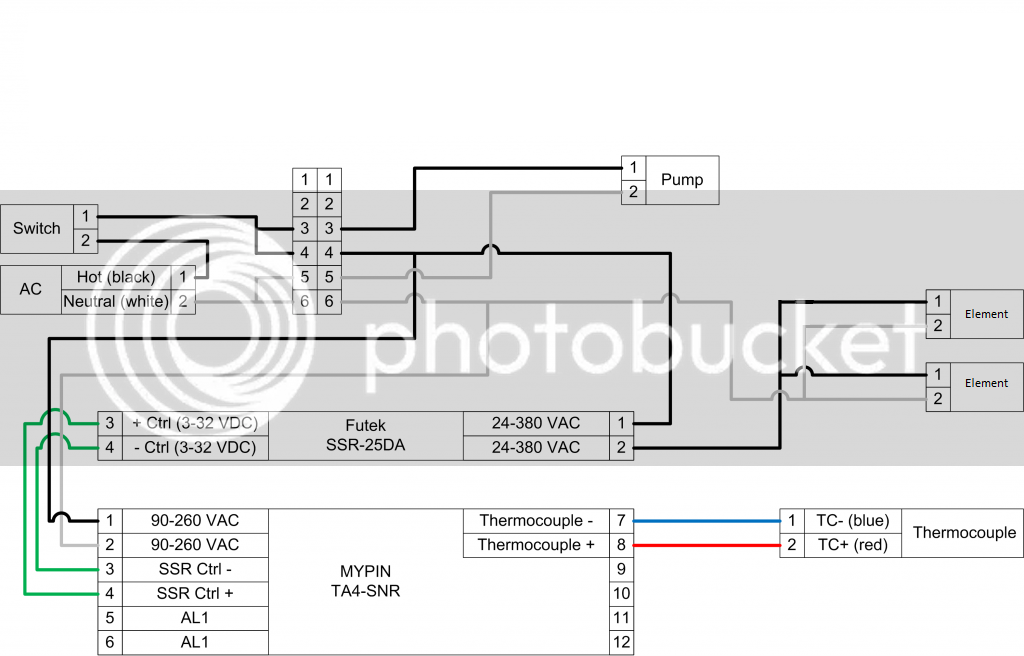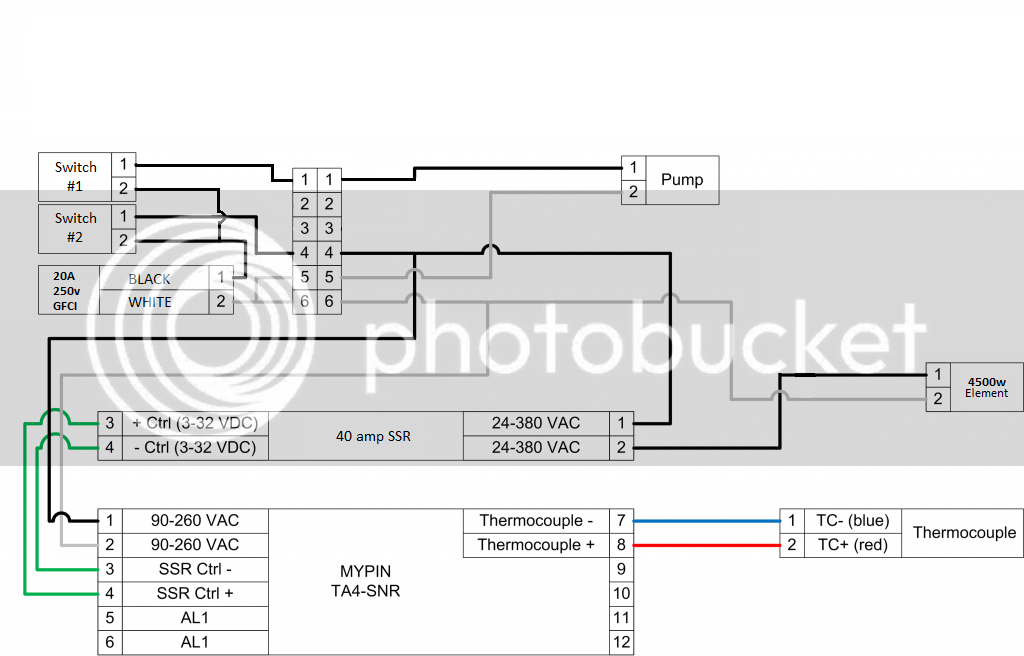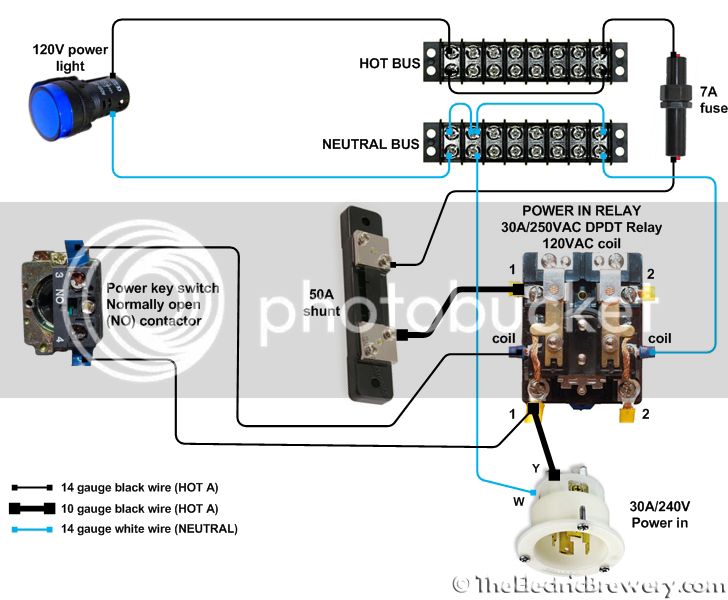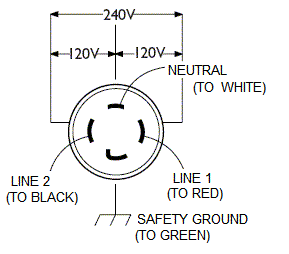120v uses 1 hot, 1 neutral and 1 ground (which you are STILL ignoring).
240v uses 2 hot, 1 neutral and 1 ground. the 2 hot lines are basically alternating phase 120v. take either hot leg, a neutral and a ground and you get 120v. take 2 hot, a neutral and you get 240v.
this diagram will not work for 240v. you do not understand how 240v works. you're missing 2 inputs to the plug, there's no ground. i have no idea why that 50a shunt is there. there's no heating element in the diagram, so this is a really elaborate switch that turns on a light bulb.
please, for the love of pete, find a buddy who has an electronics background to help you locally. you're missing a LOT of stuff. you're going to burn your house down, electrocute yourself or blow up a lot of gear. most probably all 3.







